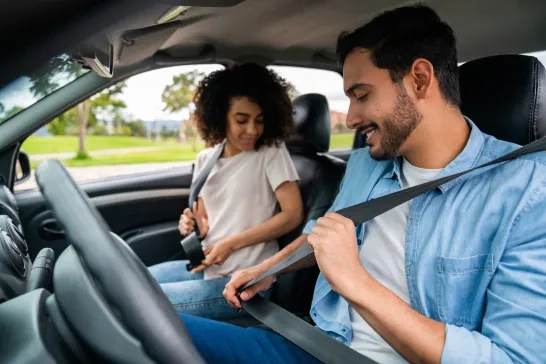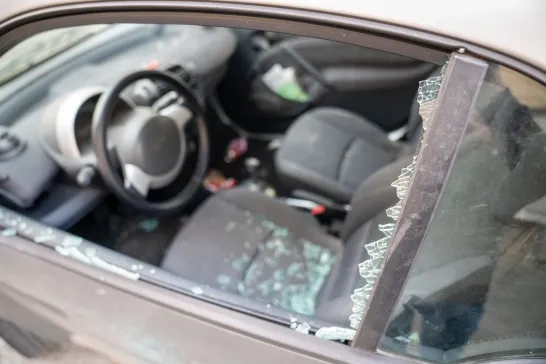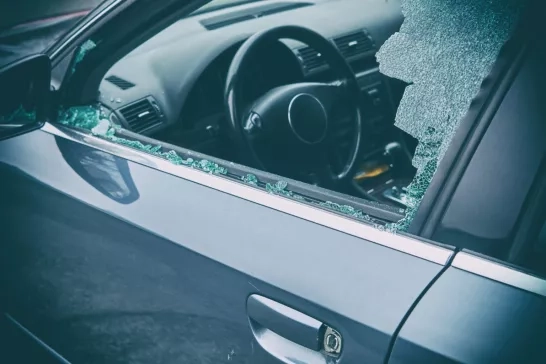Tackling the car theft crisis with prevention
4 Minute Read
Darkened driveways, laneways or street parking at night – if car thieves are going to strike, those are the times and places they're making their move. At least it seems that way.
But as the car theft crisis impacts more and more Canadians, with sophisticated and tech-savvy gangs stealing one car every five minutes in Canada, thieves are growing bolder and operating in daylight and in very public places, according to Staff Sergeant Cathy Brown, with the Ottawa Police Service (OPS).
"Thieves shop for cars everywhere. Now they're hitting parking lots at concerts or sporting events. They can use a signal blocker and interrupt the signal stopping you from locking your car with a key fob. Once they gain access, they can reprogram the key and be gone in about 15 minutes," she says. "Certainly, Canada has been deemed as a source country."
Thieves may be expanding their operations, but there are tools and strategies vehicle owners can use to prevent car thefts from occurring in the first place.
Recently, CAA sat down with Brown and Detective Doug Belanger from the OPS to discuss why car theft is on the rise and what consumers can do to protect their property.
Car theft feeds off our reliance on ‘convenience tech'
Without the convenience of key fob and relay technology, car thieves would have a much more challenging job stealing vehicles, says Det. Belanger.
"The technology we enjoy as consumers on most newer vehicles is also our vulnerability. When you combine profitability with tech, you have a recipe for the situation that we're in, which is a billion-dollar industry," he says.
While Equite Association publishes lists of most and least-stolen vehicles, such as luxury SUVs, trucks and pickups, Det. Belanger says the ‘shopping list' thieves have is expanding. The majority of these vehicles are shipped by sea container to African countries, some European locations, and the Middle East. Others are sold domestically after receiving a fake VIN or unique identification number.
"Thefts were originally related to a small proportion of vehicles, but the diversification of models and manufacturers has expanded significantly," he says.
Interestingly, while some luxury vehicles are amongst the most stolen, some brands are not targeted as often because they operate with proprietary technology and, in some cases, manufacturers have tight control over the parts supply network, making replacement parts a challenge to obtain in some locations.
Proactive and preventative measures work best
The key to prevention is to make vehicles harder to locate and steal, notes Brown. For example, a CAA Insurance survey, in 2023 found that just 34% of Canadians with garages use them for their cars.
"We haven't lost any cars – any cars – out of garages (within Ottawa). Canadians are notorious with the winter months to store seasonal stuff...in their garages. Cars are safe in garages. So, if you have a garage, please clean it out and put your stuff somewhere else," she says.
Consumers can also fight tech with tech. Aftermarket immobilizers work by establishing an unlocking process – usually a pattern of pushing steering wheel buttons or dashboard switches – that must occur in the right order before the car can start. For thieves, this presents an almost insurmountable barrier to taking a vehicle. Despite the crippling number of cars being stolen daily, CAA Insurance survey found only 33% of car owners had vehicles with factory-installed anti-theft systems.
Another cost-effective strategy involves installing a port lock, which is where thieves insert their relay technology just under the left side of the steering wheel. A professionally installed port lock requires force to remove. Once forced off, the tines can be damaged, preventing relay technology from connecting with the car's computer. Brown also adds that a visual deterrent like a steering wheel lock may not stop a theft but would make a thief think twice about the trouble and time it would take to cut a steering wheel to remove the lock. Motion lights and video cameras can also be an effective deterrent as well as provide police with evidence.
Recovery tools
Consumers increasingly use GPS tracking devices to help police services recover stolen vehicles. Such devices are typically relays hidden in a vehicle and tracked on mobile phones. If thieves use relay blockers to steal a vehicle, the devices don't appear, but once a car is left to ‘cool off' on a side street or is stored away from the blocker, they return online.
In some cases, gangs as well as organized crime groups will drop a GPS tracking device in a public place, like a restaurant parking lot, and remotely track the vehicle to the residence. Brown says that, depending on the technology used, owners can also be alerted that their car has been tagged – and can then work with police to locate and remove the device.
As police, port authorities, car manufacturers and governments work on various strategies and legislation to combat what has become a billion-dollar industry for gangs, Belanger says consumers can also play a role.
"We're at a point where assuming car theft only affects other people isn't true anymore. The key point is prevention, prevention, prevention. Some of the challenges I see with consumers and their vehicles is ‘it hasn't happened to me yet, I've gotten away with it, do I want to spend $200 to $300 or $1200 that can be a bit of an obstacle. We tend to do what's simplest and easiest. But you run the risk."
To learn more, visit caaneo.ca/car-theft




